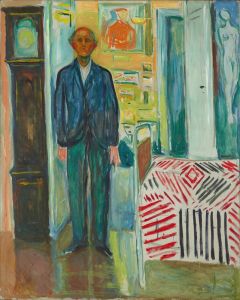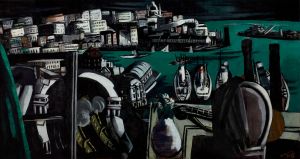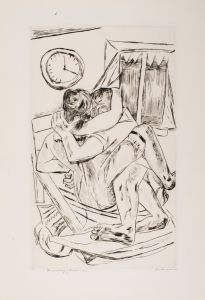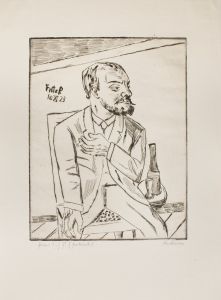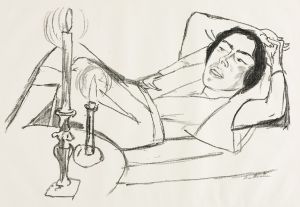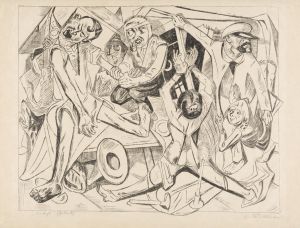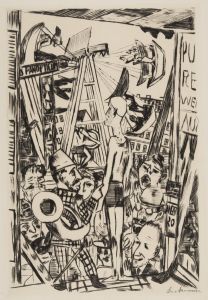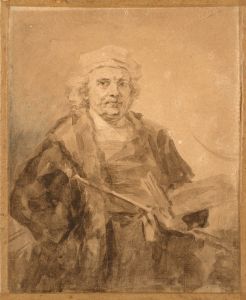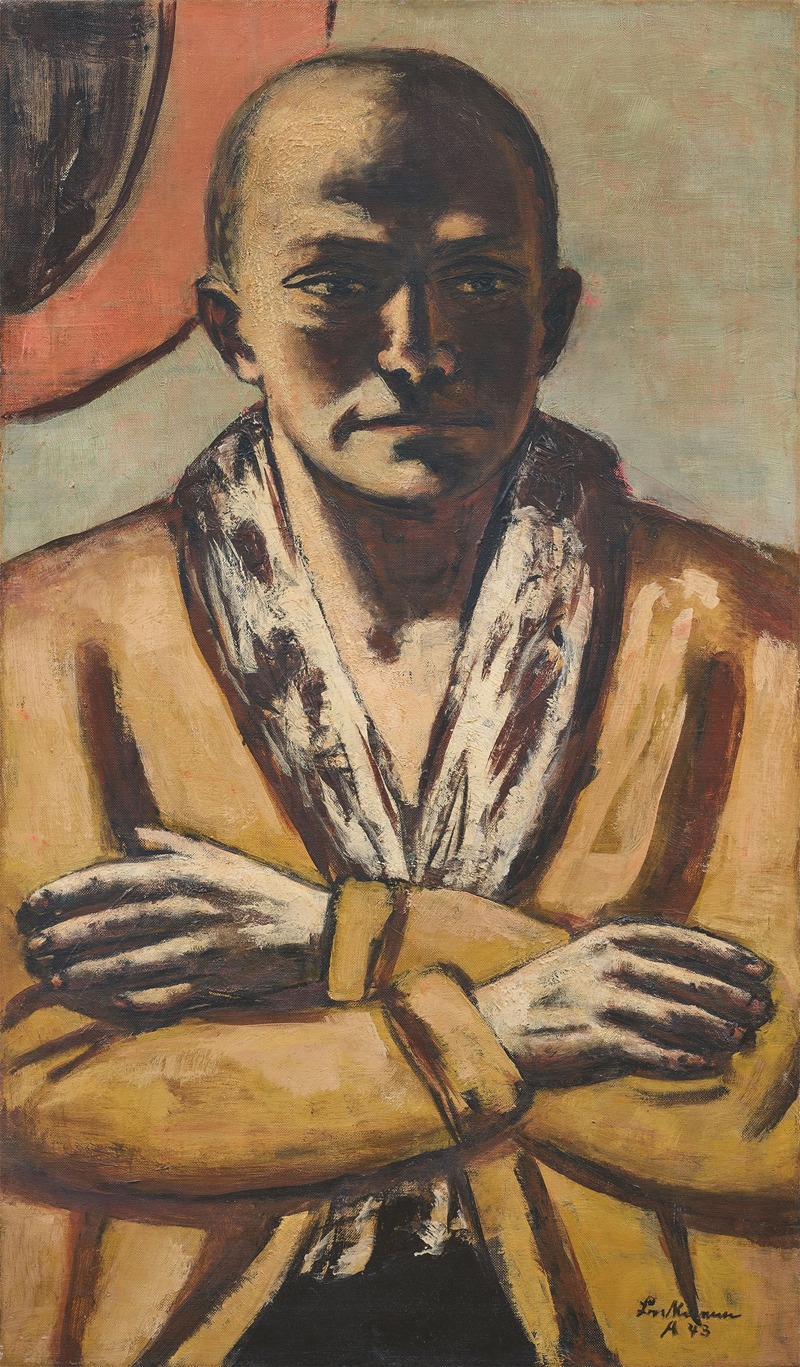
Selbstbildnis gelb-rosa
A hand-painted replica of Max Beckmann’s masterpiece Selbstbildnis gelb-rosa, meticulously crafted by professional artists to capture the true essence of the original. Each piece is created with museum-quality canvas and rare mineral pigments, carefully painted by experienced artists with delicate brushstrokes and rich, layered colors to perfectly recreate the texture of the original artwork. Unlike machine-printed reproductions, this hand-painted version brings the painting to life, infused with the artist’s emotions and skill in every stroke. Whether for personal collection or home decoration, it instantly elevates the artistic atmosphere of any space.
Max Beckmann's "Selbstbildnis gelb-rosa" (Self-Portrait Yellow-Pink) is a notable work by the German painter, created in 1943. Beckmann, an influential figure in the Expressionist movement, is renowned for his intense and introspective self-portraits, which often reflect his personal experiences and the tumultuous historical context in which he lived.
"Selbstbildnis gelb-rosa" is a striking example of Beckmann's mature style, characterized by bold colors, strong lines, and a profound sense of psychological depth. The painting features Beckmann himself, depicted with a contemplative expression. The use of yellow and pink hues in the background and on the figure's face creates a vivid contrast, highlighting the artist's skillful manipulation of color to convey emotion and mood.
During the time this self-portrait was painted, Beckmann was living in Amsterdam, having fled Nazi Germany in 1937 due to the regime's condemnation of his work as "degenerate art." This period of exile was marked by both personal and professional challenges, which are often reflected in the somber and introspective nature of his self-portraits. The choice of colors in "Selbstbildnis gelb-rosa" may suggest a complex interplay of hope and despair, a theme recurrent in Beckmann's work during this era.
Beckmann's self-portraits are renowned for their introspective quality, often serving as a window into the artist's psyche. In "Selbstbildnis gelb-rosa," the artist's gaze is direct and penetrating, inviting viewers to engage with the emotional and existential questions posed by the painting. This work is a testament to Beckmann's ability to capture the human condition, using his own likeness as a vehicle for broader commentary on identity, resilience, and the passage of time.
The painting is executed with Beckmann's characteristic precision and attention to detail. His use of thick, black outlines and a flattened perspective is reminiscent of medieval stained glass, a stylistic choice that adds a timeless quality to his work. This technique also serves to emphasize the emotional intensity of the subject, drawing the viewer's attention to the expressive power of the human face.
"Selbstbildnis gelb-rosa" is part of a long tradition of self-portraiture in art history, yet Beckmann's approach is distinctly modern. His self-portraits are not merely representations of his physical appearance but are deeply introspective explorations of his inner world. This painting, like many of his self-portraits, can be seen as a visual diary, chronicling the artist's thoughts and feelings during a period of upheaval and uncertainty.
Max Beckmann's work, including "Selbstbildnis gelb-rosa," continues to be celebrated for its emotional depth and technical mastery. His self-portraits, in particular, offer valuable insights into the artist's life and the broader historical context of 20th-century Europe. Today, Beckmann is regarded as one of the most important artists of his time, and his self-portraits remain a significant area of study for art historians and enthusiasts alike.







